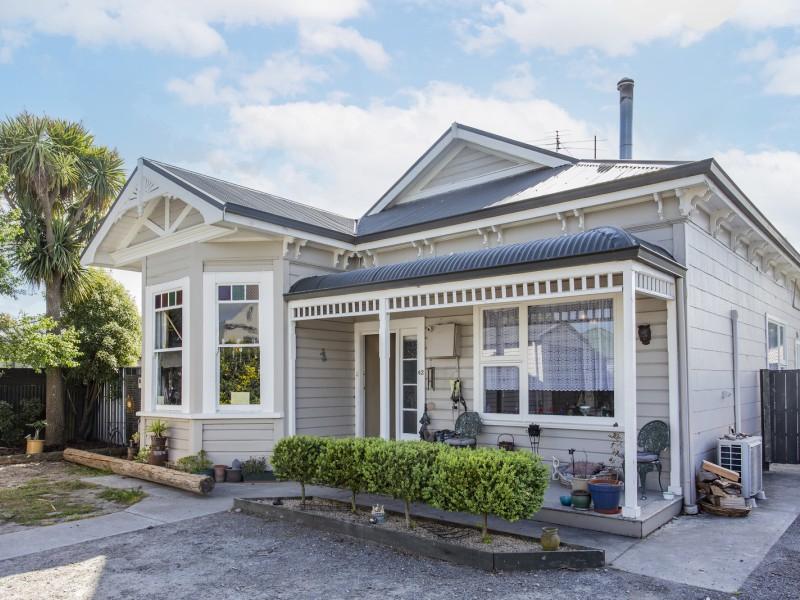Important calculations when looking to invest...
When choosing to make a property investment, the most important thing you can do is to approach the transaction
as a business decision.
You are not buying a home - which is an emotional purchase, and as much about listening to your heart as to your head. The property investment dream is to secure a high yield property in an area which will ultimately allow you to make good capital gains.
Therefore one of the most important calculations you will need to make is what the yield of a particular property will be. Yield is simply the rent a property could earn over a year, expressed as a percentage of the purchase price: Example, a $350,000 property rented at $350 a week will return a gross rental yield of 5.2%.
You can then use this figure to compare the returns you could get from a property against those provided by other types of investments, such as shares or bank deposits.
Whilst the gross rental yield is a simple calculation to use it's important to note that it doesn't take expenses into account. A property may have a high rental yield but may also have high expenses, making the rental return low when taken into consideration.
If you do want to want a more precise calculation you will need to know (or estimate) the total expenses of property including both purchasing and transaction costs (legal fees, building inspections, any start up loan fees, etc.) and annual costs such as vacancy costs (lost rent and advertising), repairs and maintenance, property management fees, home and contents insurance, rates etc.
As a general rule of thumb, cheaper houses will achieve better yields than more expensive properties.
Knowing all the extra costs can be daunting, however a Harcourts Twiss-Keir property manager can put you in touch with finance and tax specialists for assistance when deciding on an investment property.

Have your say on Canterbury’s public transport
By David Hill, Local Democracy Reporter
Canterbury residents are being encouraged to have their say on public transport in the region.
Environment Canterbury has released its draft public transport plan and is seeking submissions.
The draft plan outlines a vision for public transport in the region and notes key priorities such as improving the environment, growing patronage, accessibility, innovation and technology, and affordability.
‘‘Public transport takes many forms with communities across our region,’’ councillor Peter Scott said.
‘‘With limited funding available, we need to make sure we make the best decisions to deliver a public transport network that is integrated with urban development, innovative and meets the needs of new and existing customers.
‘‘Effective public transport is the lifeline that connects us to work, school, recreation and our friends and family, so it is important we get this right.’’
The Canterbury’s population is growing and by 2050, it is projected 700,000 people will be living in Greater Christchurch.
The draft plan covers public transport for the region, which includes the Metro service (Christchurch, Selwyn and Waimakariri), MyWay by Metro in Timaru, Total Mobility and Community Vehicle Trusts.
It was developed in partnership with local councils and Waka Kotahi NZ Transport Agency.
Environment Canterbury has been planning to step up its public transport efforts by increasing the frequency of existing services and introducing mass rapid transport in Greater Christchurch.
But these plans have been stalled by a lack of public transport funding in the Government’s 2024-27 National Land Transport Programme.
A proposal to allow people to travel with domestic pets is also included in the draft plan.
Having pets on buses has been successfully trial in other parts of New Zealand, councillor Joe Davies said.
‘‘We’re keen to understand what controls are needed for our bus users in Greater Christchurch and Timaru to be comfortable with pets on public transport.
It is proposed to allow adult passengers to bring a single pet on board, as long it is in an approved carrier at off-peak times, weekdays between 9am and 3pm or after 6pm, and during weekends.
Another proposal would loosen those restrictions in future to allow for leashed and muzzled dogs and increasing the limit to two pets per passenger.
‘‘We want to gauge how people feel about these proposals. Now is the time to have your say,’’ Davies said.
Submissions close on Thursday, October 24.
■ LDR is local body journalism co-funded by RNZ and NZ On Air.

What workplace change would you like to see most?
This coming Monday is Labour Day in New Zealand. This public holiday marks when the eight-hour workday and 48-hour workweek became law in 1899. The idea started with Samuel Parnell, a carpenter in Wellington, who in 1840 refused to work more than eight hours a day. Since skilled workers were in short supply, his employer had to agree.
As more skilled workers arrived, employers tried to change working conditions, but Parnell and others kept pushing for better rights. In 1890, Parnell led a Labour Day parade of 1,500 people to promote the eight-hour day. He passed away shortly after, and nine years later, Labour Day became an official public holiday.
Do you feel that we have reached the ideal in working environments yet? What rights are you passionate about relating to employment? Share your thoughts!

What's your favourite recipe for gooseberry?
Love gooseberries? Share your favourite way to enjoy them. We're looking for our readers' favourite family recipes for this delicious crop. Send yours to mailbox@nzgardener.co.nz, and if we use it in the magazine, you will receive a free copy of our December 2024 issue.







 Loading…
Loading…





















